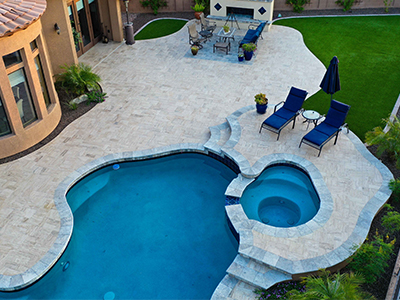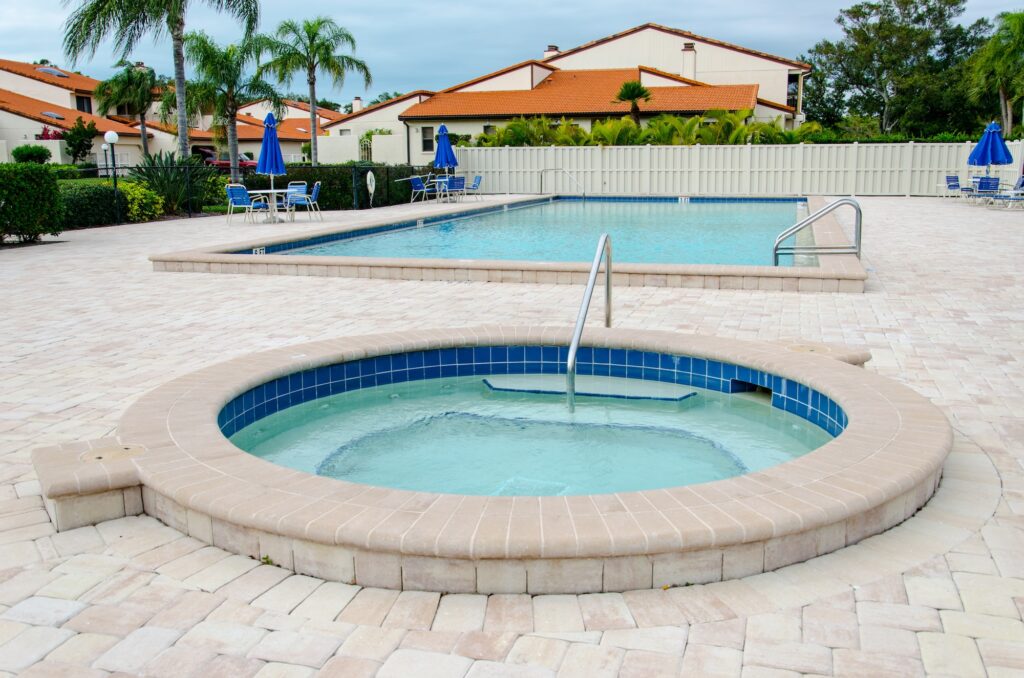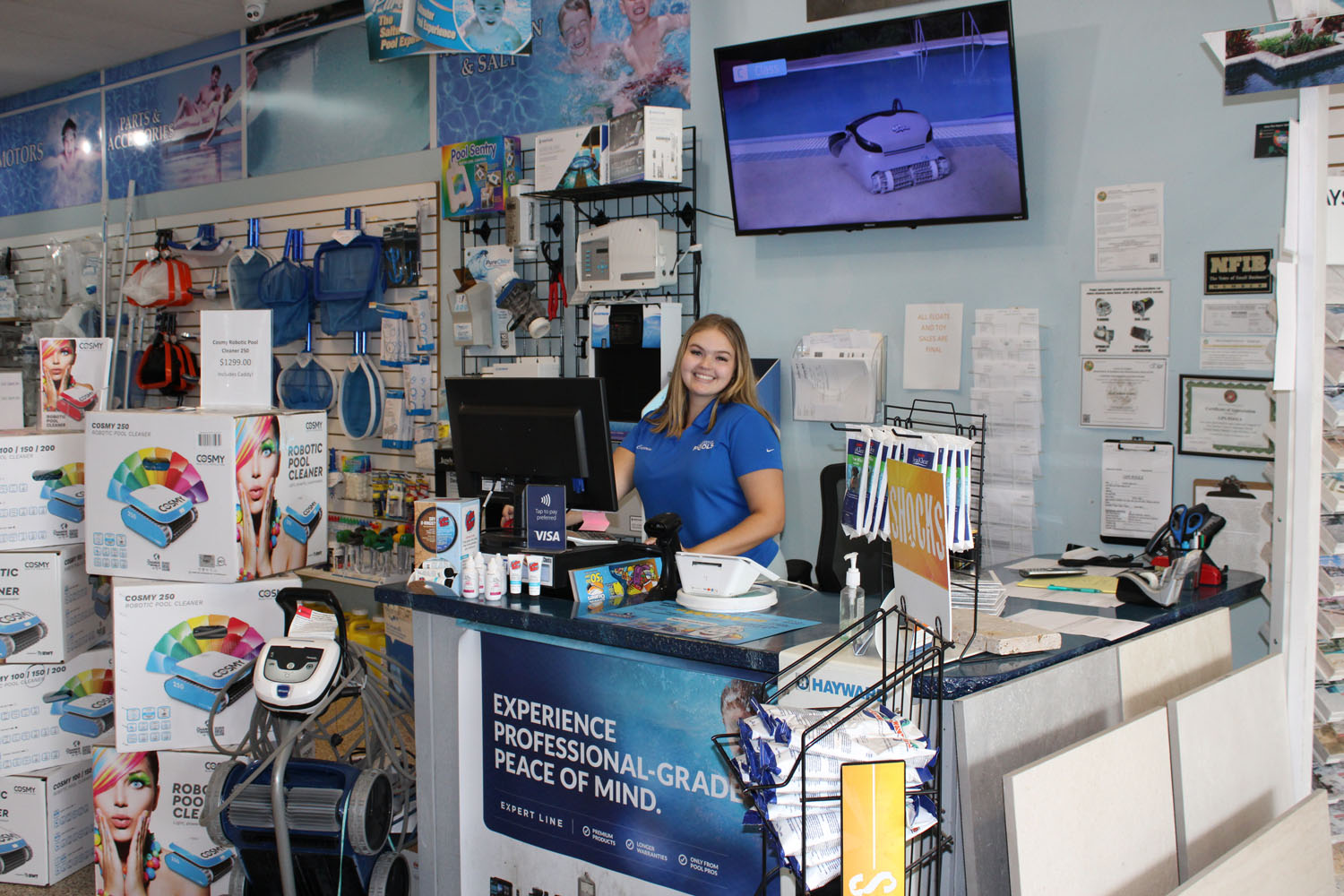Your Complete Guide to Hot Tub Maintenance
What better way to unwind from a long, stressful day than to soak for a few minutes in the warm waters of your hot tub? Owning a hot tub can be quite a wonderful gift to yourself and your household, but it comes with a few maintenance requirements that any first time or seasoned hot tub owner should know about. During this article, we will review the important components of owning a hot tub, such as having a thorough cleaning schedule, installing the appropriate filters, owning the appropriate tools to get the job done, as well as what chemicals you should be using for best results.
Here at GPS Pools, we’re all about helping you get the most out of your hot tub so that you can spend your free time the best way possible.
The importance of a filter in the hot tub
First on the list is reviewing the importance of having a clean, reliable filter in your hot tub. While this one may seem obvious, it’s easy to overlook or forget about some of the most important parts of our equipment. I mean, just think about it: all the lotion, makeup, bodily fluids, dirt and debris from simply being outside – all of that is caught in your filter. If left untreated or improperly cared for, not only will the quality of water decrease, but this buildup may eventually impact other parts of your hot tub, causing unexpected damage or even resulting in the breakdown of the rest of your equipment.
How does the hot tub filter work?
Since this piece is so important, let’s go over the basics of how it works. Any contaminants that have found their way into your hot tub will slowly be processed through your filtration unit. As the water passes through the filter folds of your spa, contaminants large and small will become entrapped, unable to pass through the microscopic openings of the hot tub filter. The reduction of contaminants in the water lowers the likelihood of cloudy, bacteria filled water, creating a more enjoyable hot tub experience.
How to clean your hot tub filter
When it’s time to freshen up your filter you have two options: a general rinse of the filter, or a scheduled deep clean. If you find the scheduled deep cleans to be more of a hassle than you’d prefer, try mitigating the frequency of your deep cleans by regularly rinsing your hot tub filter with some warm water or even the garden hose. While this won’t be a long-term solution, engaging in regular rinses can give you more time to enjoy your spa between deep cleans.
However, when it is time to do a deep clean, there’s a few simple steps to follow. First and foremost, always make sure your spa is off! Any running water when the filter has been removed can cause some serious damage to your system. You’ll begin the process by preparing a large bucket filled with a hot tub cleaning solution. Next, place your filter into the bucket to set overnight for best results. Once it’s done soaking, give it a good rinse and place it back into its housing unit.
Things to avoid when handling your hot tub filter
While cleaning the filter itself can be fairly simple, there are going to be a few things you should avoid. Firstly, bleach. While bleach is a frequently used cleaning product, it can actually result in the deterioration of your filter, requiring a replacement sooner than you’d expect. Additionally, avoid using household cleaning agents on your filter. Why? One word: foam! Household cleaners can result in an abundance of bubbles, creating serious issues and a need for a hot tub repair.
What are the varieties of hot tub filters?
While we’ve been primarily discussing the required steps for the care of cartridge filters – seeing as they’re generally the most commonly used – there are actually three other types of filtration devices for your pool spa. In addition to the cartridge filters, there are diatomaceous earth filters, sand filters, and ceramic filters. Each of these filters works in different, unique ways to best fit your cleaning needs.
Both sand and diatomaceous earth work by allowing water to run through the substances, catching any unwanted particles along the way. Ceramic filters, on the other hand, are designed to closely mimic a cartridge filter. Ceramic filters are actually one of the oldest man made water filtration methods developed. The process works about the same as a cartridge filter in that water will pass through the porous natural ceramic, keeping back pathogens and other various contaminants along the way.
Related Article: Types of Pool Filters
Chemicals are a necessary in pool and hot tub care
While the idea of soaking in a tub that’s been treated with a number of interesting chemicals isn’t ideal – it’s unfortunately necessary when taking proper care of your hot tub. Chemicals play a role in sanitizing, balancing, and protecting your water quality, so there’s no way to truly get rid of them completely without compromising the integrity of your hot tub.
What types of chemicals are needed in the hot tub?
Roughly speaking, there are about 8 different types of chemicals you’re going to want to be familiar with before trying to clean or operate your spa. The most obvious chemicals being used are cleaning agents. This includes shock treatments as well as chemical

s that help you clear out and flush your lines. In addition to that, there are chemicals that help balance your water. If the pH balance of your hot tub is off, you’re going to need to know how to balance the ratio and juggle your water’s alkalinity. To help you with this, there are alkalinity increasers, pH decreasers, and pH increasers.
While getting the hang of this balancing act can feel like the chemistry version of rocket science, it will be easy to sustain with the right guidance and practice. On the note of balancing your water, you will also need to monitor how “soft” your water actually is. Surprisingly enough, it’s a good idea to have a bit of hard water in your hot tub as it will protect the integrity of your liner and piping, so always be sure to have some products that can increase the amount of calcium in your water if needed. Lastly, if you’re a stickler for water clarity, there are some chemicals that can help reduce any cloudiness you may experience in your water.
Related Article: Bromine vs Chlorine
What are the proper chemical levels to maintain?
Now that you know what you need: let’s break down the appropriate levels that your water should be at.
- For Alkalinity, your hot tub should be around 100 to 150 ppm
- For the appropriate water pH levels, try to maintain a range that falls between 7.4 to 7.6
- When looking at how hard/soft your water is, try to maintain an average of around 175 to 220 ppm of calcium hardness.
- Your spa water temperature should be around 102 degrees fahrenheit.
If you ever find yourself having questions or concerns about these levels, or maybe you’ve discovered it’s a little harder than you thought to hit that sweet spot, don’t hesitate to contact a professional for helpful advice.
What does it mean to shock your hot tub?
Earlier we mentioned chemicals that are used to shock your spa system. But, what exactly does that mean? During times of heavy, frequent use, or maybe long periods of neglect, it is important to facilitate a shock process to your water. This occasional treatment rapidly destroys bacteria and other contaminants that have been sitting in the warm water. Additionally, you should consider shocking your hot tub when adding fresh new water to the system. The shock treatment will act as a blank slate so that you can regularly maintain your water cleanliness and chemical levels.
Which tools are necessary to help clean a hot tub?
In addition to certain chemicals, there are going to be certain tools that you will need to keep handy in order to provide the best care to your system.
You will definitely need water treatment products
This one goes without saying, you must have the treatment products listed above in order to continuously use your hot tub. Avoid waiting until these treatments are necessary, as being under prepared could ruin your investment.
A pool skimmer is affordable and useful
Believe it or not, a pool skimmer is going to be a very helpful tool. Even if you own a spa that comes with a hot tub cover, keeping a pool skimmer handy will help clear out leaves and any other contaminating items that fall in while in use.
Cleaning brushes come in handy
These specially constructed brushes are custom created for cleaning pools and hot tubs. The last thing you want to do is use a random cleaning brush that will end up either damaging your hot tub, or have you scrubbing for hours with subpar results.
Spa vacuums are great for maintaining your hot tub
Don’t want to fish around for dirt and rocks that may have found their way to the bottom of your hot tub? Consider investing in a spa vacuum. No matter how careful you are, dirt and other unwanted debris is going to attach to the bottoms of your feet or other parts of your body and transfer to the hot tub. It’s best to be prepared!
Basic hot tub maintenance tips to incorporate
Now that we’ve gone over the specifics, let’s jump into some helpful basic maintenance recommendations that you can incorporate to your hot tub routine.

Use a good cover
If your spa didn’t come with a cover, consider investing in one. Having dependable hot tub covers will help you cut down on the likelihood of contaminants, as well as the frequency in which you need to clean your spa. Covers can also help maintain your water levels as the frequency of evaporation decreases.
Skim the surface regularly
Remember that pool skimmer we recommended? Well, we promise it comes in handy. Regularly skimming will not only make your hot tub look cleaner from a visual perspective, it will also make things easier on your cleaning systems in the long run. If you use your hot tub frequently, try to skim in as needed, with a routine of at least once every other week.
Vacuum your hot tub
If you prefer to avoid investing in an expensive spa vacuum, there are other handheld water vacuums that can easily get the job done. Try to find a regular schedule where you can vacuum the bottom of your spa relatively regularly based on how often you use it.
Regularly test your pH and alkaline levels
Even if you think you have it down to a science, try to regularly test your water’s pH and alkaline levels to ensure that your safety and the integrity of your hot tub is not at risk of being compromised. You can test these levels with test strips from your local pool store.
Change your water every couple of months
This goes for those who use their hot tub regularly, as well as those who may only use their hot tub once every few months: change your water consistently after a few months of use. Not only will this be more hygienic, it will be easier on you and your spa system to maintain.
Get ready for the winters
Once the temperatures drop, it’s time to shift gears on caring for your hot tub. Each system should have a winter mode, so start your preparation by making sure the hot tub has been adjusted appropriately. Additionally, try to keep your spa cover on at all times when not in use.
For serious repairs or concerns, contact professionals
Although we live in a world of DIY, it’s best to take all serious repairs straight to the professionals. The last thing you want is to risk your safety or further complicate any damages to your hot tub – you can never be too careful.
GPS Pools is here to help keep your hot tub clean for the summertime!
Need an extra helping hand from the best hot tub team around? Not sure where to find the right supplies? You can trust GPS Pools for all of your pool and hot tub service needs. With locations in Lutz, Land ‘O Lakes, and New Tampa, we’re sure to have exactly what you need at a conveniently located store. Otherwise, if you need help with leaks, hot tub chemicals, equipment installation, or repairs, feel free to contact us for all your pool and spa needs!

